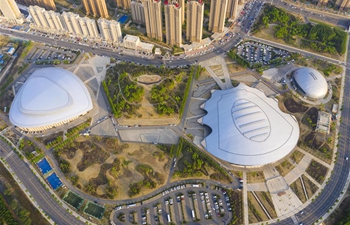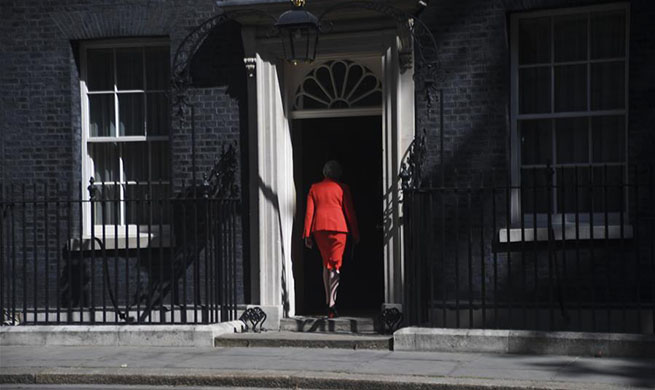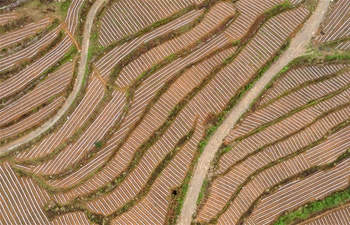by Fatima Aruri
RAMALLAH, May 25 (Xinhua) -- On the way back from work or school during the month of Ramadan, most families would make stops to buy the traditional dessert of the season, Qatayef, a kind of dessert widely enjoyed after the first meal of the day for fasting Muslims.
The simple recipe making it affordable for everybody, Qatayef is not a dessert easy to prepare at home. With starch, water and yeast, Qatayef's circular bread is made by specialized sweet shops. When taken home, the dessert is stuffed with nuts or cheese, fried or oven-baked, and then dipped in sugar syrup.
Eating Qatayef is a long tradition with reference in history books since the Abbasid era (750 A.D. to 1258 A.D.). It has become a Ramadan must-have dessert.
During Ramadan, Muslims all over the world abstain from eating and drinking from dawn to dusk throughout the entire month. Starting the day after Ramadan is over, Muslims launch a three-day feast known as Eid al-Fitr.
Nowadays, special machines pour materials on a large hot plate to increase efficiency and produce Qatayef in bigger quantities.
Dessert chef Abdallah Nabulsi, 45, is responsible for the Qatayef making in one of the busiest sweet shops in Al-Bireh city, near Ramallah. He has been in the business since he was 15 years old and learned it from his father.
"When I used to work with my father, we used to make the dough by hand, tolerating the hot water used in the process, in order to feed people and enjoy the atmosphere of Ramadan," said Nabulsi.
He went on saying that this tradition has run through "since our grandparents' days." During Ramadan, it is an affordable must on the table, next to falafel and hummus.
It is generally believed that this dessert would invigorate Muslims after long-time fasting.
Zaher Hmeidat, a regular customer of Qatayef, said that he is reminded by his family and neighbors to buy the dessert before heading home.
"In a nutshell, it is a popular dessert in Palestine that gives body energy," Hmeidat said.
"During this holy month of Ramadan, people live with limited energy and lack of sugar, so this meal gives us dough, cheese and sugar needed after breaking the fast. This has been a historic tradition in Ramadan," he concluded.

















